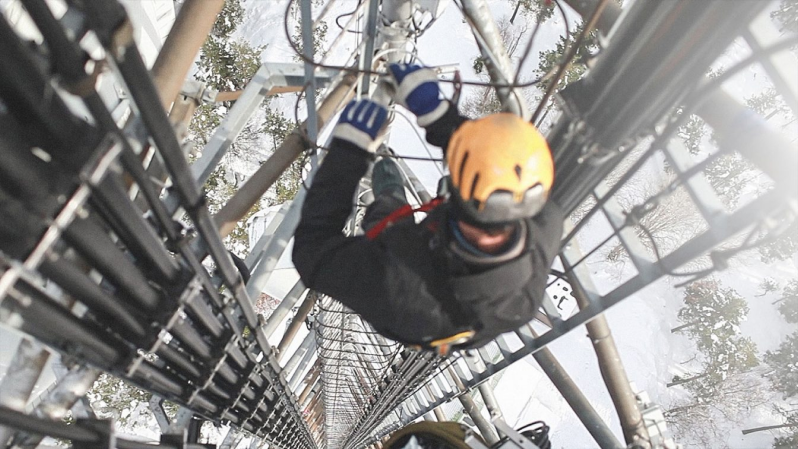Energy 4.0. The challenges of digitising an infrastructure company
Source: Äri-IT, autumn 2021
Author: Külli Rebane, business manager at BCS Itera
Climate agreements and targets, labour shortages, deployment and maintenance of modern equipment, assets spread across different locations, precise production planning, prevention of problems, customer communication that meets the expectations of modern customers, large data volumes, and AI-driven smart analytics… These are just a few of the aspects that infrastructure companies are dealing with today and tomorrow. Technology affects everyone, and infrastructure companies and their processes and trends are no exception.

OVERVIEW OF ASSETS
Managing one boiler plant would not be that difficult, but there are usually more of them than just one. How do you manage assets where your pipelines cover an entire city or the whole country? The magic word is technology, which comes to the rescue by providing infrastructure companies with a comprehensive overview of assets and their characteristics, location, time of purchase or construction, when they were last serviced, and what kind of investments are needed, while also taking into account online information obtained via the Internet of Things on the status of assets and potential issues.
PREVENTION OVER INTERVENTION
This magical Internet of Things, or IoT – much talked about, praised, and even criticised, but now absolutely indispensable. Gone are the days when problems had to be identified (often after the fact, unfortunately) by a specially trained technician, who was constantly driving around the country. Today’s equipment transmits information in real time for real-time reaction and decision-making before the wear limit is reached and actual damage is done. For example, district heating pipes equipped with sensors that measure temperature, humidity, vibration, or insulation resistance, allowing you to make the right decisions before any equipment is damaged or people are put at risk, without ever having to leave your desk in the office.
Or another example: inspecting infrastructure by means of a drone or 3D surveying aircraft in locations where the inspector has to cross long distances and which are difficult, costly, and dangerous to access. This allows the inspector to arrive with a clear idea of the problem that needs to solved, as well as to pack the necessary tools and materials. Moreover, it frees you of the need to always send a top professional to do the job. You don’t need the company’s best specialist to be an equally adept mountain climber – you can just send whoever is able to get to the equipment safest or quickest and then have a specialist guide them with the help of a VR headset.
DATA AND WHAT TO DO WITH IT
Smart devices go hand in hand with an abundance of data received in real time. The more the merrier, though it is certainly a challenge as much as an opportunity. Handled correctly, data can and should equate to quick, correct, and timely decisions; to fixing faults according to plan, rather than unexpectedly in an emergency. When to carry out maintenance on power lines? At what point would the loss of income be the smallest? At what point would an alternative option be most affordable and sufficient?
Due to the high amount of the data put out by equipment, it is neither technically nor humanly feasible to manage these mountains of information in an Excel spreadsheet. For a machine, however, analysing millions of rows of data and predicting failures before they happen is a matter of mere seconds. Note that turning to machines for help does not eliminate the human aspect from the equation: the decision of what, at which intervals, and how to analyse is still made by a person. Likewise, the final decision, for example on how much heat to produce given the projected air temperatures over the next three months, or how much more electricity to produce given the projected wind energy output based on the weather forecast, or when to perform the next routine maintenance given the consumption levels, is also left to humans, at least for a while yet. While machines are still learning and the analytics underpinning decision-making are still being refined with predictive models.
THE CUSTOMER IS KING
Data, analytics, and technological solutions are not only relevant to the infrastructure companies, but also to their customers and partners. By allowing meters to be read remotely, they have freed customers from having to report readings every month. Communication, meanwhile, has moved online – the days when you had to visit a company’s offices to pay your electricity or water bill are long forgotten. Not only that, customers now expect more than just the possibility to receive invoices electronically and pay them via a bank link or by direct debit. They expect information on their consumption levels as well as on the factors influencing them (e.g. heat consumption based on the energy type of the dwelling). Customers want to know what their projected costs are like for future periods if they do nothing, as well as what would happen if they made changes.
Additionally, they expect – and rightly so – to be informed promptly and preferably through multiple channels of any possible service disruptions, which are thankfully less and less unexpected where proper-quality technology is utilised. And information exchange and communication via online channels is also being employed for partners in the interest of speed and accuracy as well as to reduce the amount of manual labour.
Energy 4.0? Yes. Digitisation, and well beyond just deploying computers to go paperless, is increasingly important for companies whose fleet of equipment and machinery is large, widely dispersed, and often hard to reach for people. The reason, of course: to be faster, more accurate, and more efficient in production, maintenance, sales, and communication with customers and partners.